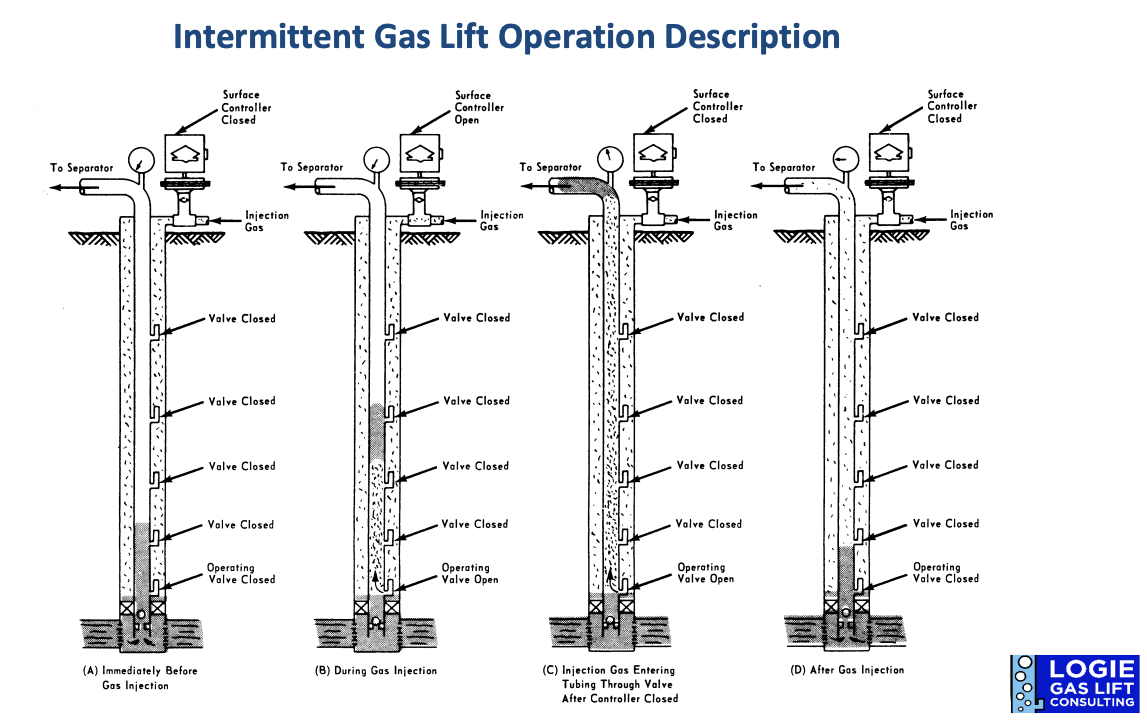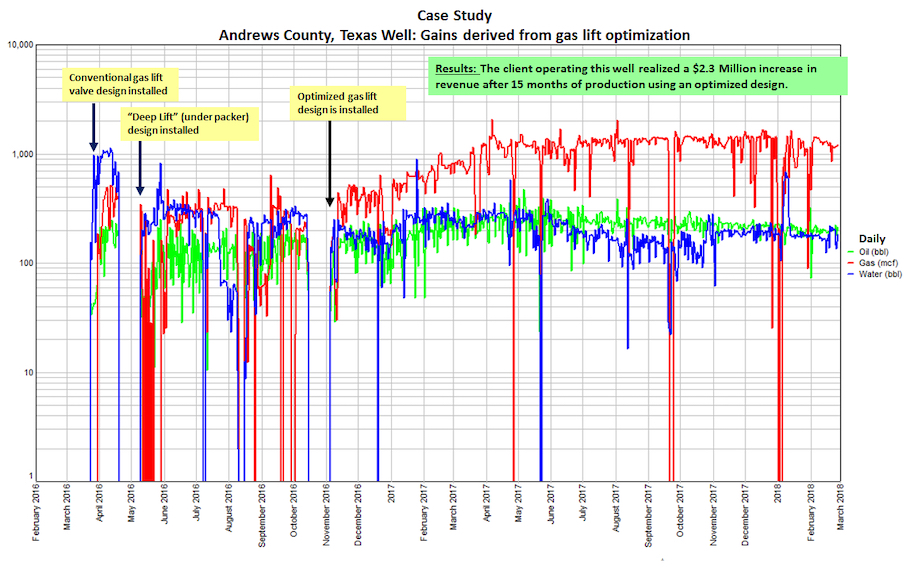Presented by:

Editor's note: This article appears in the E&P newsletter. Subscribe to the E&P newsletter here.
As E&P budgets tighten and cash flow becomes the ultimate goal, producers are seeking ways to reduce costs and increase production. Mature wells, which still have significant reserves but their best producing days are behind them, are particular targets for evaluation because their margins are smaller than those of new wells.
The main focus in well evaluation is the lift system. Proper choice, design and management of this component trumps all other issues in determining production and profitability of a mature well.
Most wells start with high production rates between 1,000 and 3,500 bbl/d. Depending on the well and its gas-liquid ratio, electric submersible pump (ESP) or continuous gas lift are the most common choices. As production drops below 350 bbl/d, those high production systems are no longer efficient, and ESPs may even be damaged by working with inadequate flow.
When changing lift systems, companies choose between high-capital-expense rod pump and lower cost alternatives such as gas-assisted plunger lift (GAPL) and intermittent gas lift (IGL).
Lift differences
GAPL creates a downhole pressure differential in the wellbore sufficient to launch a plunger to the surface, carrying accumulated liquid with it. It creates this differential by closing and opening a valve attached to the producing flowline and using a screen orifice as its bottommost operating valve in the wellbore.
IGL relies solely on the expansion of high-pressure gas injected into the tubing below an accumulated liquid slug. Unlike GAPL, there is no surface controller or flowline valve. The injection-pressure-operated (IPO) gas-lift valve on the bottom opens at a set pressure to intermittently surface the slug.

Efficiency
IGL gains efficiency advantages because it uses the largest gas-lift valve port size possible. This allows greater liquid recovery at lower gas-liquid ratios. Larger port sizes create a lower minimum tubing pressure at the operating valve, allowing greater bottomhole pressure drawdown. It also minimizes the time for liquid fall-back or pressure stabilization in the tubing string, permitting faster cycle frequency.
GAPL installations typically use smaller 3/16-inch or 1/4-inch port orifices, which are subject to plugging.
IGL installations generally use 5/16-inch and larger port sizes.
Standard practice among operators has been to use continuous gas lift with a screen orifice installed on bottom for high producing rate wells. Then, when production drops below 350 bbl/d, convert these wells to GAPL leaving the orifice in place. This practice, for reasons explained above, is inefficient.
The average injection volume for a GAPL well producing 60 bbl/d is 500 Mcf/d. On IGL this well requires 250 Mcf/d or less to operate efficiently. Reducing injection rates by 50% in this example means an increase in natural gas sales of approximately $473,150 per year per well.
IGL is similar in process to installing a pump off controller in a rod pumped well. In that case, with only 30 bbl/d, 24-hour pumping is not necessary. Similarly, IGL reduces the lift intervals to times when there is sufficient fluid present to maximize the benefit of a surface trip.

Making the change
Changing from GAPL to IGL involves replacing the screen orifice used in a GAPL system with an IPO valve designed to open at a set pressure. Operators then set timed intervals for gas injection with an actuated control valve at the surface, attached to the gas injection line.
In the field
A major operator had a large number of wells on GAPL, most of them averaging less than 35 bbl/d. Well data showed widely fluctuating gas-lift system pressures, unstable production levels and a variety of compression issues.
The producer converted 42 of these wells to IGL, which reduced injection rates by 50%. These stabilized system pressures in all the wells and increased production in many of them.
In another case, an Oklahoma operator converted a well from GAPL to IGL, reducing lifting costs while tripling production. This well produced from 14,760 ft with a plunger placed just above the bottommost IPO gas-lift valve.
Conclusion
A properly designed IGL system provides many benefits including better control of gas injection rates, greatly reduced injection costs and, in some cases, increased production. IGL consistently applies injection only after sufficient fluid has accumulated above the IPO valve on the bottom. Gas not injected can be sold into the pipeline, and with gas prices around $5 per MMbtu, the cost benefits add up quickly, especially in larger fields.
About the company: Logie Gas Lift Consulting provides services to major and independent operators in North America and internationally. All gas-lift designs and calculations are based on the works of Dr. Kermit Brown (Univ. Tulsa) and Dr. Herald Winkler (Texas Tech Univ.). System Nodal Analysis Program (SNAP) software is used in gas-lift designs.
Recommended Reading
Kimmeridge Fast Forwards on SilverBow with Takeover Bid
2024-03-13 - Investment firm Kimmeridge Energy Management, which first asked for additional SilverBow Resources board seats, has followed up with a buyout offer. A deal would make a nearly 1 Bcfe/d Eagle Ford pureplay.
Uinta Basin: 50% More Oil for Twice the Proppant
2024-03-06 - The higher-intensity completions are costing an average of 35% fewer dollars spent per barrel of oil equivalent of output, Crescent Energy told investors and analysts on March 5.
Bobby Tudor on Capital Access and Oil, Gas Participation in the Energy Transition
2024-04-05 - Bobby Tudor, the founder and CEO of Artemis Energy Partners, says while public companies are generating cash, private equity firms in the upstream business are facing more difficulties raising new funds, in this Hart Energy Exclusive interview.
E&P Earnings Season Proves Up Stronger Efficiencies, Profits
2024-04-04 - The 2024 outlook for E&Ps largely surprises to the upside with conservative budgets and steady volumes.
Buffett: ‘No Interest’ in Occidental Takeover, Praises 'Hallelujah!' Shale
2024-02-27 - Berkshire Hathaway’s Warren Buffett added that the U.S. electric power situation is “ominous.”





